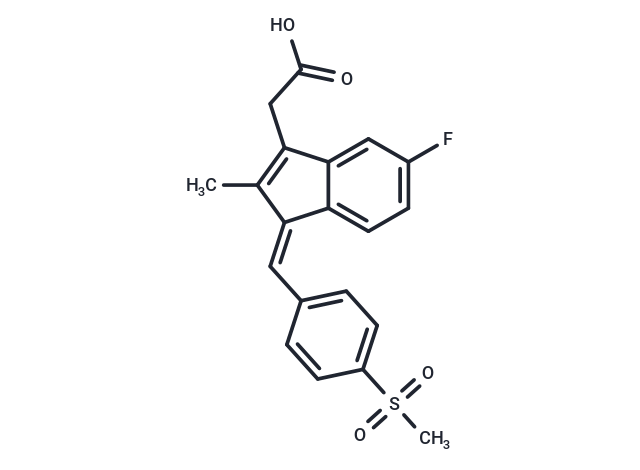Shopping Cart
- Remove All
 Your shopping cart is currently empty
Your shopping cart is currently empty

Exisulind (CP248) induces apoptosis through the activation of protein kinase G (PKG). Exisulind exhibits antineoplastic activity in solid tumour and haematological cancer cell lines and is an inhibitor of tumour growth in rodent models of colon, prostate, bladder, mammary and lung cancer.

| Pack Size | Price | Availability | Quantity |
|---|---|---|---|
| 5 mg | $47 | In Stock | |
| 10 mg | $80 | In Stock | |
| 25 mg | $163 | In Stock | |
| 50 mg | $243 | In Stock | |
| 100 mg | $359 | In Stock | |
| 1 mL x 10 mM (in DMSO) | $52 | In Stock |
| Description | Exisulind (CP248) induces apoptosis through the activation of protein kinase G (PKG). Exisulind exhibits antineoplastic activity in solid tumour and haematological cancer cell lines and is an inhibitor of tumour growth in rodent models of colon, prostate, bladder, mammary and lung cancer. |
| In vivo | The topical treatment with NO-Exisulind significantly reduced UVB-induced tumors in SKH-1 hairless mice. The tumors/tumor bearing mouse, the number of tumors/mouse and tumor volume/mouse decreased significantly (P < 0.05) as compared with vehicle-treated and UVB-irradiated positive controls. NO-Exisulind-treated animals showed reduced expression of proliferation markers, such as PCNA and cyclin D1. These mice also manifested increased expression of proapoptotic Bax and decreased expression of antiapoptotic Bcl2 with an increase in the number of TUNEL-positive cells in tumors. NO-Exisulind-treated tumors are less invasive and progress less efficiently from benign to malignant carcinomas[1]. |
| Alias | Sulindac sulfone, CP248 |
| Molecular Weight | 372.41 |
| Formula | C20H17FO4S |
| Cas No. | 59973-80-7 |
| Smiles | CC1=C(CC(O)=O)c2cc(F)ccc2\C1=C/c1ccc(cc1)S(C)(=O)=O |
| Relative Density. | 1.31g/cm3 |
| Storage | Powder: -20°C for 3 years | In solvent: -80°C for 1 year | Shipping with blue ice/Shipping at ambient temperature. | |||||||||||||||||||||||||||||||||||
| Solubility Information | DMSO: 55 mg/mL (147.69 mM), Sonication is recommended. | |||||||||||||||||||||||||||||||||||
Solution Preparation Table | ||||||||||||||||||||||||||||||||||||
DMSO
| ||||||||||||||||||||||||||||||||||||

Copyright © 2015-2025 TargetMol Chemicals Inc. All Rights Reserved.